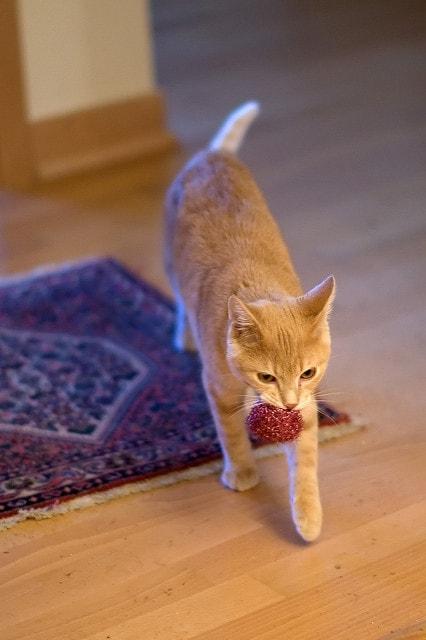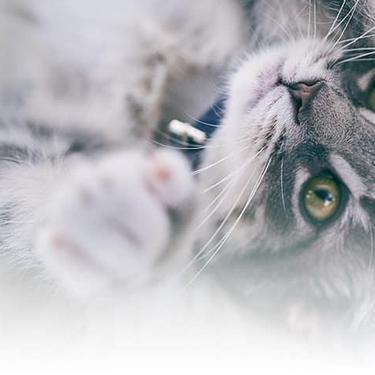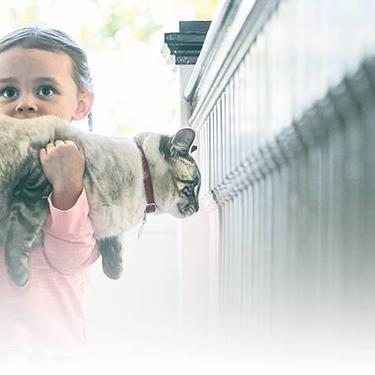
-
Find the right food for your petTake this quiz to see which food may be the best for your furry friend.Find the right food for your petTake this quiz to see which food may be the best for your furry friend.Health CategoryFeatured products
 Hill's Science Diet Adult Healthy Mobility Large Breed Chicken Meal, Barley & Brown Rice Recipe Dog Food
Hill's Science Diet Adult Healthy Mobility Large Breed Chicken Meal, Barley & Brown Rice Recipe Dog FoodAdvanced nutrition shown to support joint health and improve mobility
Shop Now Adult Large Breed Chicken & Barley Recipe Dog Food
Adult Large Breed Chicken & Barley Recipe Dog FoodSupports healthy joints, lean muscle, and beautiful coat for large breed dogs
Shop Now Adult Light Large Breed Chicken Meal & Barley Recipe Dog Food
Adult Light Large Breed Chicken Meal & Barley Recipe Dog FoodFewer calories for less active large breed dogs
Shop NowFeatured products Adult Sensitive Stomach & Skin Pouch Variety 12 Pack Cat Food, Chicken & Beef, Salmon & Tuna
Adult Sensitive Stomach & Skin Pouch Variety 12 Pack Cat Food, Chicken & Beef, Salmon & TunaCarefully made, gourmet daily nutrition. Tasty chunks with Salmon & Tuna in a decadent gravy. Supports digestive health, nourishes skin and promotes a lustrous fur.
Shop Now Adult Oral Care Chicken & Brown Rice Recipe Cat Food
Adult Oral Care Chicken & Brown Rice Recipe Cat FoodClinically proven kibble technology to reduce plaque & tartar build-up
Shop Now Adult Perfect Digestion Chicken, Barley & Whole Oats Recipe Cat Food
Adult Perfect Digestion Chicken, Barley & Whole Oats Recipe Cat FoodHill's Science Diet's breakthrough nutrition supports ultimate digestive well-being & healthy microbiome
Shop Now -
DogCat
- Cat Tips & Articles
-
Health Category
- Weight
- Skin & Food Sensitivities
- Urinary
- Digestive
- Kidney
- Dental
- Serious Illness
-
Life Stage
- Kitten Nutrition
- Adult Nutrition
Featured articles Cat vs. Dog: Which Is the Best Pet for Me?
Cat vs. Dog: Which Is the Best Pet for Me?Learn about important differences between dogs and cats, such as cost & space considerations. These factors can help you decide which pet is best for you.
Read More Adopting a Pet: What You Need to Know
Adopting a Pet: What You Need to KnowLearn the basics of adopting a pet, including where to begin and common questions you should ask yourself when deciding which kind of pet is best for you.
Read More Fun Ideas for Kids and Pets This Summer
Fun Ideas for Kids and Pets This SummerOutdoor summer activities with your dog or cat can be fun for kids, too. Learn how they also teach kids responsibility & creates a bond with their pet.
Read More -


Yes, you read that title correctly — cats can do the same things that dogs can do, and maybe even better. Discover how to teach a cat to fetch, and impress all of your neighbors and friends.
Think Like a Cat
Dogs love to please owners; however, cats are more concerned with pleasing themselves. By realizing this simple concept, you can understand why teaching a cat to fetch has to be approached differently from how you would train your dog. When it comes to training a cat, there are some basic techniques that you must know in order to be successful. These basic principles all start with the letter "R," so that makes it a little easier to remember!
Respect
You need to respect what cats do and don't like. Don't stare at your cat or make loud noises during training or playtime. When she doesn't feel up for play, don't force it. Try to train her when she's feeling extra playful.
Reinforcement
Consistently recognize when your cat does things you want her to do, and be consistent in how you let your cat know she is doing things you don't like (for instance, walking on your counters). A firm "no" or clap when she misbehaves may work, but when she does something you approve of, don't give her a round of applause. Instead, pet her or give her a treat.
Rewards
Cats love small treats as a reward for good behavior. One of the secrets of how to teach a cat to fetch may be hidden in simply having the right treats. Use them only when she does the action you want her to, and don't overdo it, so as to not add unwanted pounds.


Tasty Tips
Timing Is Everything
First, you have to get to know your cat, and build a trusting and loving relationship before you can start training them to do tricks or play fetch, says the ASPCA. Figure out what toys or items in your house they're drawn to the most. These items are the ones you should try to use for playing fetch.
Cats are drawn to hunt and pounce on things — throwing a soft item and allowing your cat to chase it, and then going over and placing a treat near the item may reinforce and reward the first step in fetching. After a few days of successfully getting your cat to pounce or go near the item you throw, you are ready to attempt having them bring you the item. You can do this by leaving a trail of treats after throwing the item. As time goes on, make the treats closer to you and farther from the object. Keep in mind, it is best to do all of this at a time of day when your cat is most active. Make sure to always use the same verbal queues to reinforce the action such as "fetch," or "bring it here."
Fetching Failures
If it seems like all of your attempts at training your cat to fetch have failed, take a break for a few days and then try again with new toys and different treats. Not all dogs like the same games, so it is possible your cat won't ever be interested in fetch. However, don't give up too quickly. Allow several different people in your home to try to train her. Cats sometimes bond with one person more than another and may only want to play fetch with their favorite human.
If you are successful, be sure to catch it on video so that all of your friends believe you! Everyone loves fun cat videos.
Image courtesy: Flickr/John Benson


Christine O'Brien is a writer, mom, and long-time cat parent whose two Russian Blues rule the house. Her work also appears in Care.com, What to Expect, and Fit Pregnancy, where she writes about pets, pregnancy, and family life. Find and follow her on Instagram and Twitter @brovelliobrien.
Related products

Carefully made, gourmet daily nutrition. Tasty chunks with Salmon & Tuna in a decadent gravy. Supports digestive health, nourishes skin and promotes a lustrous fur.

Hill's Science Diet's breakthrough nutrition supports ultimate digestive well-being & healthy microbiome

Clinically proven kibble technology to reduce plaque & tartar build-up

Delicious tender chicken and rice in a mouthwatering sauce with precisely balanced nutrition to support 5 essential building blocks for lifelong health
Related articles

Obesity affects more than 30 percent of cats in America. Learn how you can properly feed and exercise your cat to improve its weight management.

Get helpful information on proper feline oral healthcare and why it's so vital to take care of your cat's teeth.

Understand the symptoms of a chronic upset stomach in your cat, and learn how to help sooth their discomfort.

Provide the best possible treatment for cats with sensitive skin by spotting the signs, knowing the causes, and understanding the remedies. Learn more now.

Put your cat on a diet without them knowing
Our low calorie formula helps you control your cat's weight. It's packed with high-quality protein for building lean muscles, and made with purposeful ingredients for a flavorful, nutritious meal. Clinically proven antioxidants, Vitamin C+E, help promote a healthy immune system.
Put your cat on a diet without them knowing
Our low calorie formula helps you control your cat's weight. It's packed with high-quality protein for building lean muscles, and made with purposeful ingredients for a flavorful, nutritious meal. Clinically proven antioxidants, Vitamin C+E, help promote a healthy immune system.

